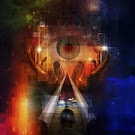Sharon Hewitt Rawlette writes in her essay, Beyond Death: The Best Evidence for the Survival of Human Consciousness — "Let’s start with one of the most common types of ostensible after-death communication: apparitions. The late Icelandic psychologist Erlendur Haraldsson, one of the preeminent investigators of after-death communication in the last few decades, reported that visual experiences of the deceased constituted 67% of the cases he collected of apparent contact with the dead while in a waking state. But apparitions aren’t only a visual phenomenon. Many apparitions are heard to speak, and others actually touch the perceiver. According to one of Haraldsson’s informants, the apparition “held out her hand, grasped my fingers hard and said: ‘Hello there.’ ... I had seen spirits before, [but] I had never seen the like of this and never touched one, not one which seemed to be of flesh and blood.” While such lifelike apparitions could conceivably be very vivid hallucinations, several pieces of evidence count in favor of at least some apparitions’ being genuine contacts with the consciousness of the deceased.
Apparitions Occurring Before Knowledge of the Death
"One of the strongest pieces of evidence that apparitions are not mere hallucinations induced by grief or wishful thinking is the fact that people often see an apparition before they were even informed of the death of the person involved.
"Cases like this go all the way back to the earliest years of parapsychological research. For instance, in 1860, Robert Dale Owen published his personal investigation of the case of a British military captain, Captain Wheatcroft. Wheatcroft was stationed in India, but on the night of November 14-15, 1857, he apparently appeared to his wife beside her bed back in Cambridge, England. She said that she saw him bent forward, as if suffering, and that he appeared to be trying to speak but no sound came out. After a minute or so, he vanished. This experience led the captain’s wife to suspect he’d been killed or badly wounded, but it wasn’t until the following month that she got word her husband had died on November 15. When she heard this, however, she felt sure that the date she was given was wrong and that her husband must have died the previous day, November 14, before she saw him appear. Wheatcroft’s lawyer also subsequently discovered that another woman of his acquaintance had experienced an apparition of a man corresponding to the captain’s description, bent over in pain, and that this apparition had happened around 9pm on November 14. This, too, seemed to support the idea that there was a problem with the reported date of death. Indeed, a few months later, a man who was an eye- witness to Wheatcroft’s death confirmed that he had in fact died on November 14. This was the date inscribed on his grave in India, and the British War Office records were subsequently corrected to reflect this.
"Here’s another carefully investigated case in which an apparition provided otherwise unknown information about the death of the person involved. A 17-year-old girl named Minnie Wilson was living at a convent in Belgium when she received an unexpected visit from her godfather. He came up to her while she was kneeling at prayer in a chapel (and possibly in a trance-like state). “I thought something was wrong as he had such a pained expression,” Minnie recounted in her written statement. “[H]e took my hand and said he had done something very wrong and that it would help him a great deal to have me to pray for him; then he told me he had been refused by the woman he loved and that he had shot himself in his despair.” In fact, Minnie’s godfather had died three days before in London, in precisely the way his apparition described. Minnie had not yet been informed of the death, as the convent in which she lived did not allow newspapers, and her mother did not write to her about it until three days after the apparition. Even then, her mother did not tell her the circumstances of her godfather’s death. It was Minnie herself who, on her next visit home to England, insisted that her mother tell her whether her godfather had taken his own life because a woman wouldn’t love him. Her mother then confirmed this was true.
"While these cases are somewhat exceptional in the amount of detail relayed by the apparitions, experiencing an apparition before being informed of a death is itself very common. Haraldsson reports that, of the 449 cases of apparent encounters with the dead that he collected, one out of every nine happened within 24 hours of the death, and in 86% of those cases, the person having the experience did not yet know that the death had occurred."
Sharon Hewitt Rawlette has a PhD in philosophy from New York University and writes about consciousness, parapsychology, and spirituality for both academic and popular audiences. She lives in rural Virginia. She received an award from the Bigelow Institute for Consciousness Studies for her essay “Beyond Death: The Best Evidence for the Survival of Human Consciousness,” available at https://bigelowinstitute.org/contest_winners3.php. Footnotes in the essay are not included in these excerpts.










